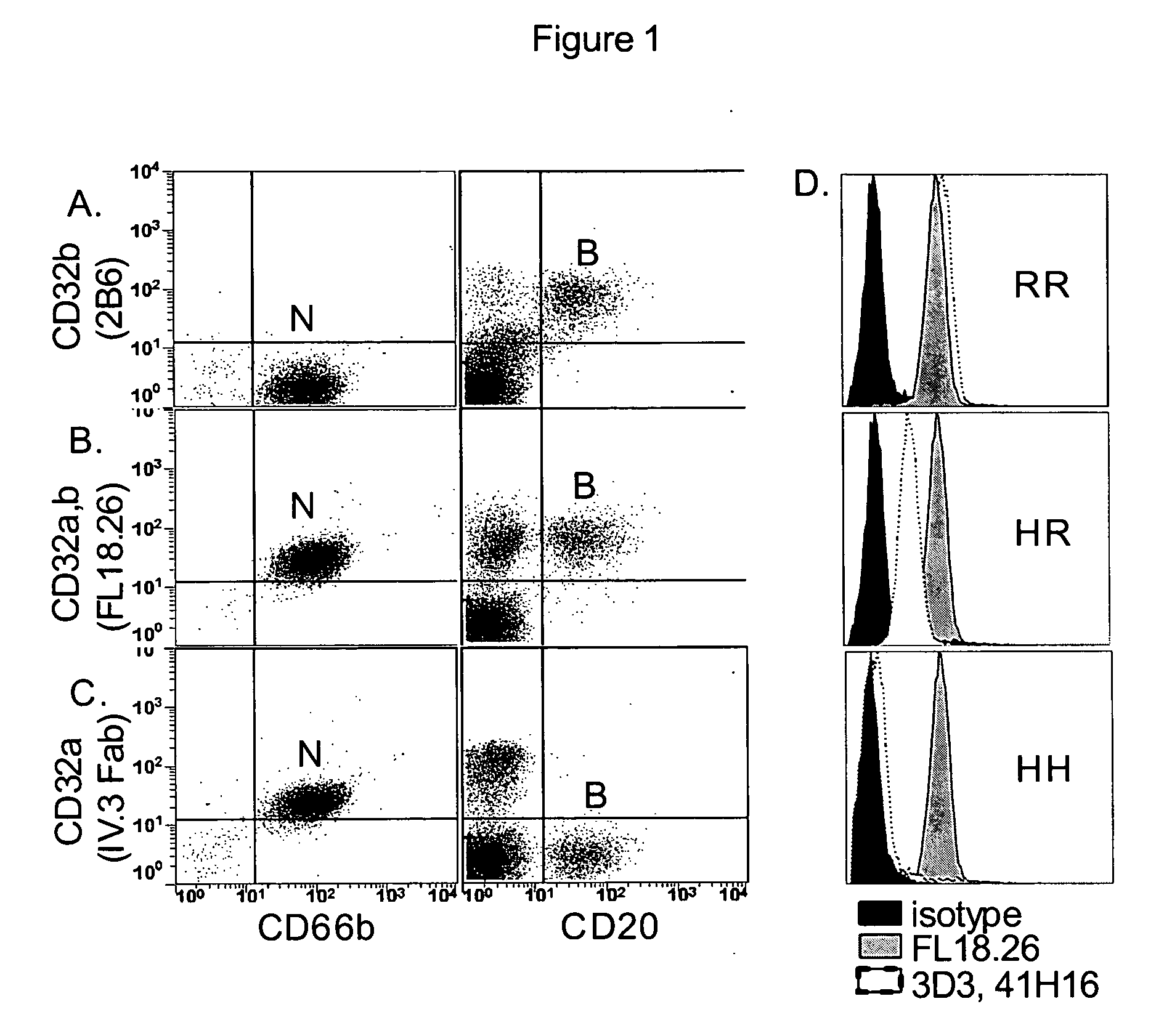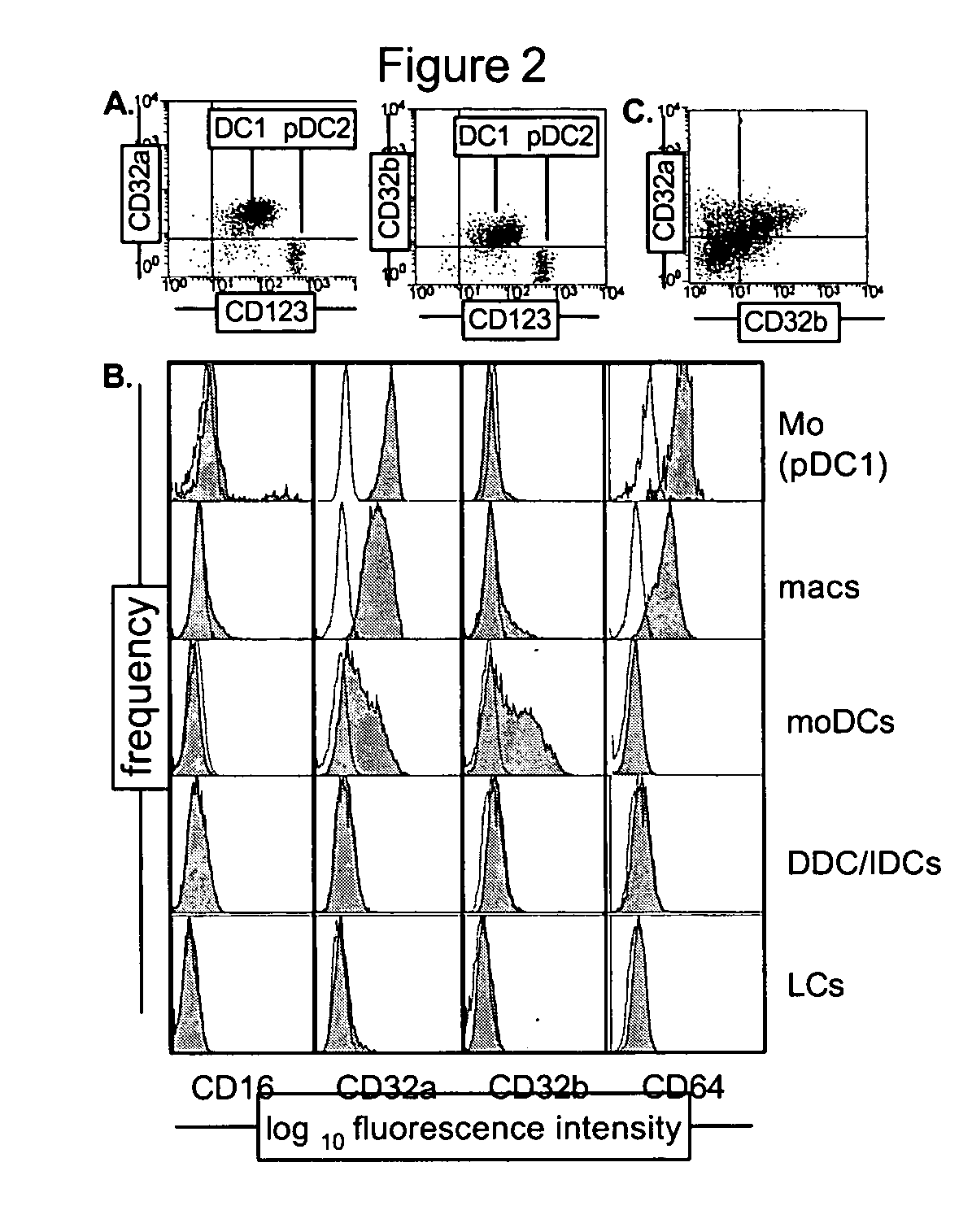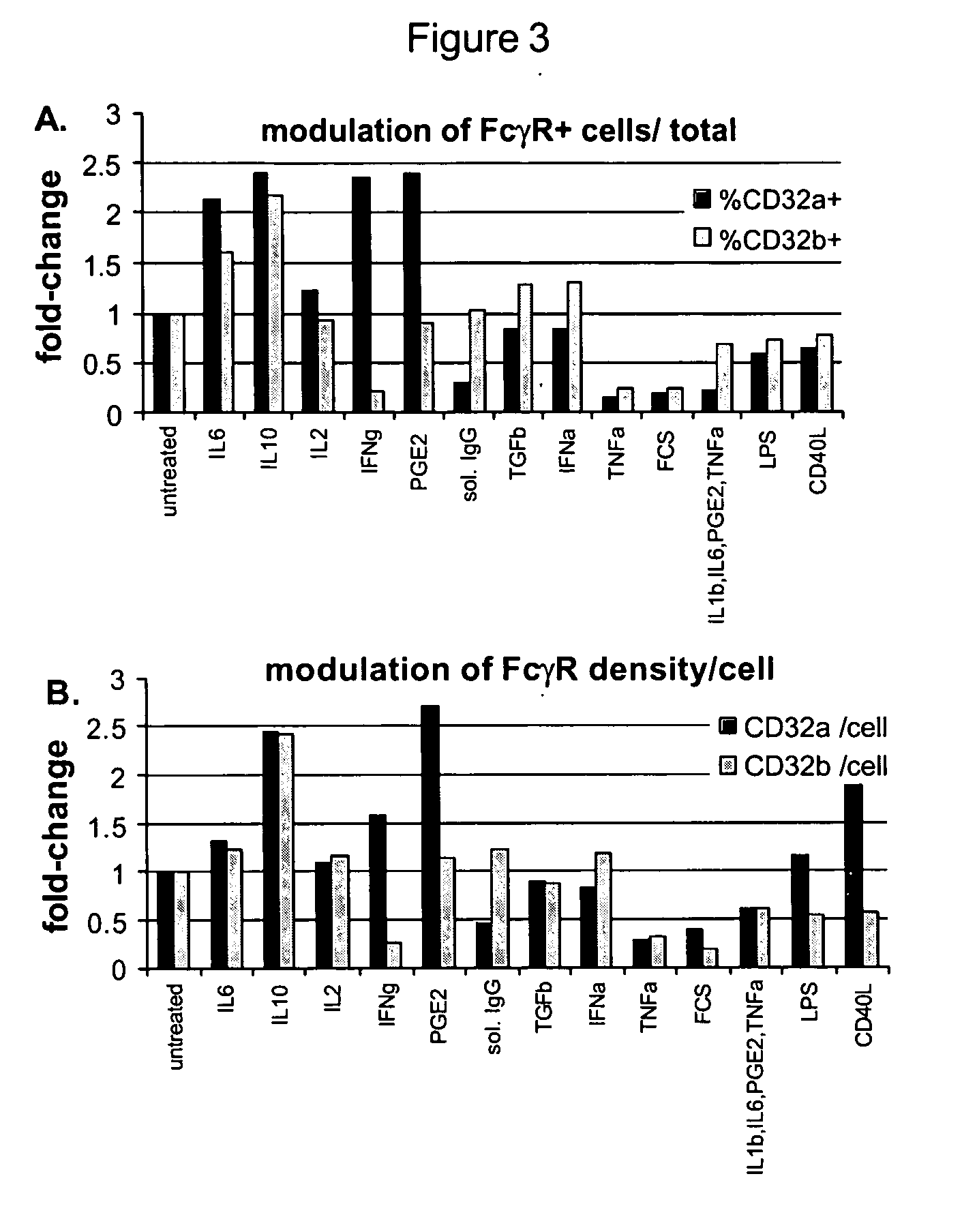Modulation of Fc gamma receptors for optimizing immunotherapy
a technology of gamma receptor and gamma receptor, which is applied in the field of modulation of fc gamma receptor for optimizing immunotherapy, can solve the problems of increasing destruction, affecting the treatment effect, and presenting serious side effects, and preventing so as to improve the differentiation of dendritic cells, prevent and promote the maturation of dendritic cells.
- Summary
- Abstract
- Description
- Claims
- Application Information
AI Technical Summary
Benefits of technology
Problems solved by technology
Method used
Image
Examples
Embodiment Construction
[0114] 5.1 Modulation of Maturation of Dendritic Cells
[0115] The present invention provides methods for modulating the differentiation of dendritic cells. More specifically, the present invention provides methods for modulating the maturation of dendritic cells. In particular, the invention provides methods for (a) promoting the maturation of dendritic cells thereby producing mature dendritic cells, and (b) preventing the maturation of dendritic cells thereby preventing maturation and / or inducing phenotypic changes resulting in the production of tolerogenic dendritic cells. Without being bound by theory, immature dendritic cells, such as, but not limited to, monocyte derived dendritic cells or myeloid blood dendritic cells, coexpress activating and inhibitory Fc gamma receptors. The present inventors have found that targeting activating Fc gamma receptors, i.e., preferentially or specifically activating the signaling pathway(s) downstream of activating Fc gamma receptors, results i...
PUM
| Property | Measurement | Unit |
|---|---|---|
| soluble | aaaaa | aaaaa |
| structural heterogeneity | aaaaa | aaaaa |
| length | aaaaa | aaaaa |
Abstract
Description
Claims
Application Information
 Login to View More
Login to View More - R&D
- Intellectual Property
- Life Sciences
- Materials
- Tech Scout
- Unparalleled Data Quality
- Higher Quality Content
- 60% Fewer Hallucinations
Browse by: Latest US Patents, China's latest patents, Technical Efficacy Thesaurus, Application Domain, Technology Topic, Popular Technical Reports.
© 2025 PatSnap. All rights reserved.Legal|Privacy policy|Modern Slavery Act Transparency Statement|Sitemap|About US| Contact US: help@patsnap.com



